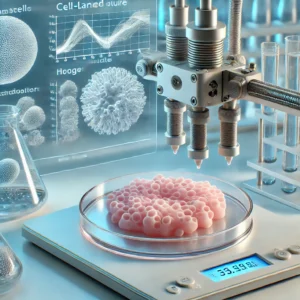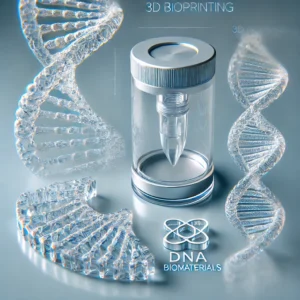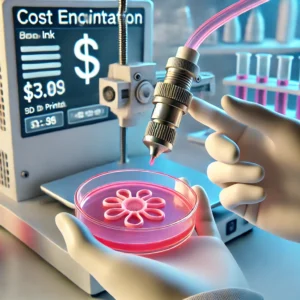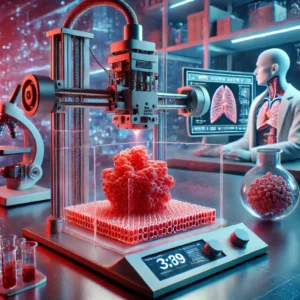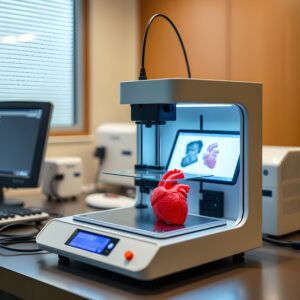Disadvantages of 3D Bioprinting: Overcoming Challenges in Printing Human Tissues and Organs
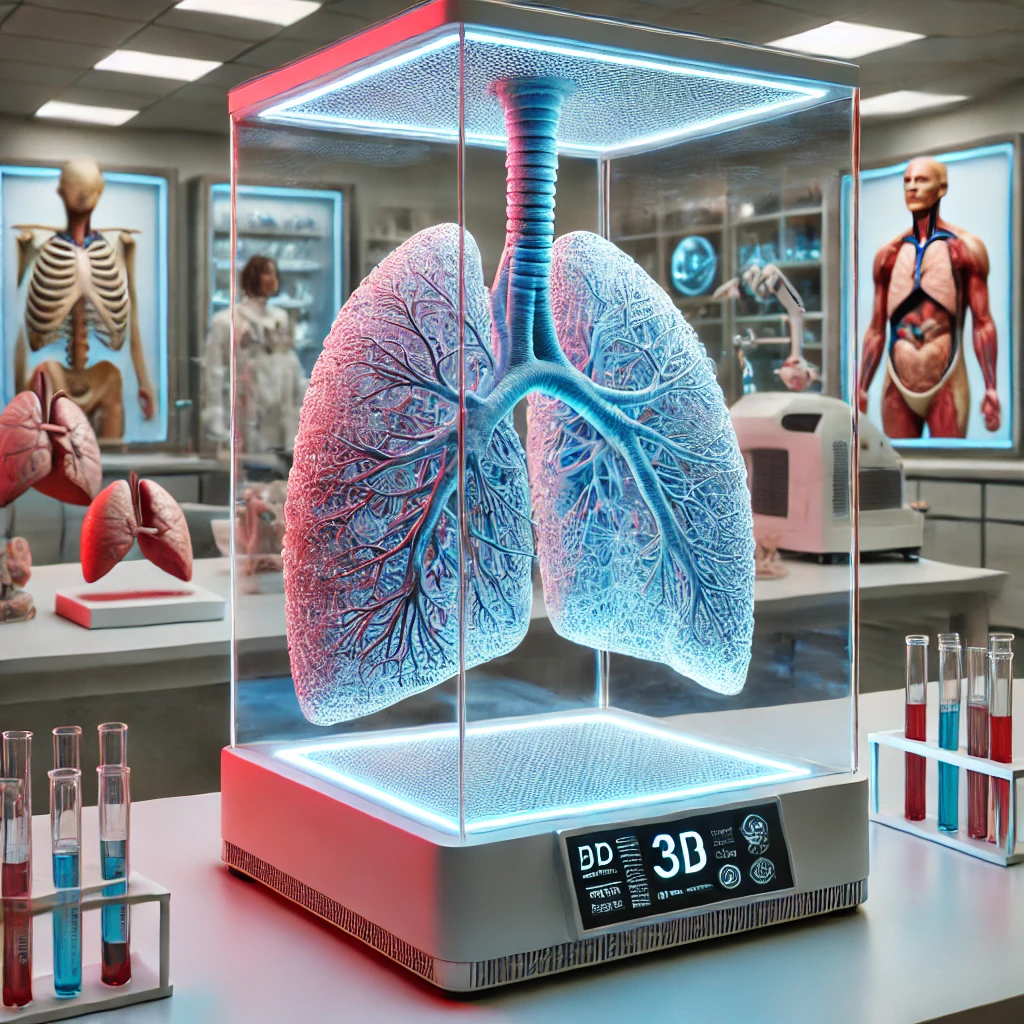
3D bioprinting is a cutting-edge advancement in healthcare, giving hope to millions by enabling the creation of artificial organs and tissues. This transformative technology, with the potential to solve global organ shortages and advance personalized medicine, is considered one of the most revolutionary developments in medical science. Yet, despite its promise, 3D bioprinting also faces significant challenges that hinder its widespread adoption. These challenges range from technical issues and material limitations to ethical dilemmas and high costs. In this article, we’ll delve into the top disadvantages of 3D bioprinting, providing a comprehensive analysis of why this technology, although promising, is not without substantial obstacles.
1. Technical Limitations in 3D Bioprinting
Replicating the complex structure of human tissues and organs with 3D bioprinting requires extraordinary precision. Unlike traditional 3D printing, bioprinting operates at a cellular level, requiring the deposition of living cells in specific arrangements to mimic biological structures. This technical complexity leads to several limitations.
Challenges in Replicating Complex Tissue Architecture
Human tissues, particularly organs, have highly complex architectures. For instance, replicating organs like the liver or kidneys involves creating intricate networks of cells, tissues, and blood vessels. Unfortunately, current 3D bioprinting technology struggles to produce these intricate details. Vascular networks, essential for delivering nutrients and removing waste in tissues, are especially difficult to replicate. Without these networks, bioprinted tissues can quickly deteriorate, limiting their use primarily to short-term applications and research.
Precision and Layering in Cell Placement
3D bioprinting demands exceptional precision in positioning cells. Any deviation in cell alignment can impact the structure’s overall function, leading to ineffective or even unusable tissue. Although modern bioprinters have improved their resolution and accuracy, they remain unable to match the complexity found in natural tissues. Ensuring precise cell placement, especially in dense, complex tissues, continues to be a critical challenge.
Adaptation to Biological Processes
Another technical limitation is the difficulty in replicating the dynamic biological processes that occur within tissues. Human tissues are not static; they constantly adapt to stimuli, heal, and regenerate. Bioprinted tissues often lack this ability to adjust, which limits their effectiveness in replacing damaged or diseased organs.
2. Bioinks and Material Challenges
Bioinks are the backbone of 3D bioprinting, allowing cells to be printed into three-dimensional structures. A successful bioink must support cell viability, promote tissue development, and maintain structural integrity. However, developing bioinks that meet these requirements is still a significant hurdle.
Mechanical Strength and Biocompatibility
Most bioinks used in 3D bioprinting are hydrogels, which have high water content and can encapsulate living cells. Yet, these bioinks often lack the mechanical strength needed to withstand physiological conditions. For example, cartilage tissue in the human body must be strong enough to withstand the mechanical forces exerted on it. Bioinks that cannot replicate this strength limit the functional application of bioprinted tissues.
Similarly, biocompatibility is essential. If a bioink is not biocompatible, it may trigger immune responses, leading to inflammation or rejection of the bioprinted tissue. Developing bioinks that are both strong and biocompatible remains an ongoing challenge.
Limited Range of Bioink Materials
The materials suitable for bioinks are limited, which restricts the types of tissues and organs that can be created. Currently, the most commonly used bioinks include alginate, gelatin, and collagen. These materials work well in some applications, but many organs require different properties to replicate natural function. Without a broader range of bioink materials, 3D bioprinting will continue to be limited in scope.
Ensuring Nutrient Diffusion
In bioprinted tissues, nutrients must diffuse from surrounding media into the tissue to sustain cell survival. In thicker tissues, diffusion alone is often inadequate, leading to cell death in central areas. This issue compounds with the challenge of creating vascular networks within bioprinted tissues. Until a solution for integrating vascular structures into bioprinted tissues is developed, bioink material limitations will continue to hinder the field.
3. Cell Viability Issues in 3D Bioprinting
For 3D bioprinting to succeed in medical applications, the printed cells must remain viable throughout and after the printing process. Unfortunately, maintaining cell viability presents a significant obstacle due to the physical stresses cells undergo during printing.
Effects of Extrusion and Other Printing Methods
One of the most common 3D bioprinting methods is extrusion, in which bioink is forced through a nozzle to create the desired structure. However, the process of extrusion can place stress on cells, causing cell damage or death. Even with recent advancements in reducing these stresses, cell viability remains a significant concern. When cells lose viability, the resulting tissue may not function correctly, further limiting the application of 3D bioprinting in healthcare.
Impact of Post-Printing Environment
Even if cells survive the printing process, they must also endure the post-printing environment, which can include exposure to different temperatures, oxygen levels, and nutrient concentrations. Cells that are not provided with optimal post-printing conditions may fail to proliferate, differentiate, or perform necessary functions. Creating an environment that supports cell health after printing is a complex task that researchers continue to address.
Ensuring Long-Term Functionality of Cells
Maintaining cell viability is not enough; bioprinted cells must also function correctly. For example, bioprinted cardiac cells must contract rhythmically, while bioprinted liver cells must be able to metabolize toxins. Ensuring that cells retain these functionalities over time is an ongoing challenge, as it often requires precise biochemical cues and environmental conditions that are difficult to replicate.
4. Ethical and Regulatory Concerns
3D bioprinting raises complex ethical and regulatory issues. These concerns stem from questions about human enhancement, the potential for misuse, and the lack of regulatory standards for bioprinted organs and tissues.
Human Enhancement and Moral Boundaries
3D bioprinting could theoretically lead to human enhancement—creating organs that are superior to natural ones in some way. For instance, organs could be engineered for greater resilience or efficiency. While this may offer health benefits, it also raises moral questions about where to draw the line. Should we limit bioprinting to therapeutic uses, or is it acceptable to enhance human capabilities? These questions highlight the need for ethical guidelines in bioprinting.
Access and Equity Issues
The potential to create organs raises questions about who will have access to this technology. High costs and technical requirements could make bioprinting an option only for the wealthy, creating disparities in healthcare. Additionally, some fear that bioprinted organs could be exploited commercially, with companies setting exorbitant prices, making them inaccessible to those in need.
Regulatory Hurdles
Despite advancements, there are still no comprehensive regulations governing the use of bioprinted tissues in humans. Regulatory bodies such as the FDA have begun exploring guidelines, but bioprinting’s rapid evolution makes it difficult to establish rules that cover every potential outcome. The lack of regulatory frameworks not only poses ethical risks but also limits research and commercial applications due to uncertainty over legal standards.
5. High Costs and Accessibility
3D bioprinting is an expensive process that requires specialized equipment, materials, and technical expertise. From high-tech printers to customized bioinks, the financial barriers to entry are substantial.
Equipment and Material Costs
The cost of a 3D bioprinter can range from tens of thousands to millions of dollars, depending on its complexity and capabilities. In addition, the bioinks and other materials used are often expensive and require specialized storage and handling. These high costs make bioprinting accessible primarily to well-funded research institutions and private companies, limiting its reach.
Operational Expenses and Technical Expertise
Beyond the initial equipment investment, ongoing operational expenses add to the cost. Running a 3D bioprinting lab requires skilled technicians and scientists who are familiar with both the equipment and the biological processes involved. The limited number of professionals trained in bioprinting further raises the cost of operation, making it difficult for smaller research institutions or clinics to adopt the technology.
Limited Accessibility for Developing Countries
For countries with limited healthcare budgets, 3D bioprinting is often not a feasible option. Even as advancements make bioprinting more accessible, disparities in global healthcare infrastructure mean that many regions may not benefit from bioprinting developments. This lack of access can perpetuate health disparities, making it difficult for bioprinting to achieve its full humanitarian potential.
6. Future Directions to Overcome 3D Bioprinting Disadvantages
While the disadvantages of 3D bioprinting are substantial, ongoing research holds promise for overcoming these obstacles. Below are some of the primary strategies being explored to address the challenges outlined above.
Advances in Bioinks and Material Science
Researchers are developing new bioinks that combine strength and biocompatibility. Hybrid bioinks, which incorporate multiple materials to balance mechanical strength with biological compatibility, show promise. Additionally, self-healing bioinks that mimic the body’s ability to repair itself may help improve the durability of bioprinted tissues.
AI and Machine Learning in Bioprinting
Artificial intelligence and machine learning are being leveraged to improve the bioprinting process. AI can help analyze large datasets to determine optimal printing parameters, which may enhance cell viability and tissue functionality. Machine learning algorithms can also predict which bioink compositions and environmental factors will produce the most viable tissues, streamlining research efforts.
Development of Vascularization Techniques
Creating vascular networks within bioprinted tissues is one of the biggest technical challenges. Researchers are exploring various methods, including sacrificial bioinks that dissolve after printing to create hollow channels. Another approach is to print cells that stimulate the body to grow blood vessels naturally, a process known as angiogenesis.
Establishing Regulatory Standards
To facilitate the safe use of bioprinting, regulatory bodies need to establish clear standards. Working closely with scientific experts, regulatory agencies like the FDA are beginning to draft guidelines for bioprinting applications. Comprehensive regulations could help mitigate ethical concerns and pave the way for safe and effective use of bioprinted tissues in clinical settings.
3D bioprinting is a groundbreaking technology with the potential to transform medicine. However, it is also accompanied by considerable challenges, from technical limitations and ethical concerns to financial barriers. Addressing these disadvantages will require innovative approaches, collaboration across scientific disciplines, and clear regulatory guidance. While 3D bioprinting may not yet be ready for widespread use, ongoing research and development hold promise for overcoming these obstacles. With continued advancements, 3D bioprinting may one day fulfill its potential to improve healthcare for patients around the world.
Visit our other website: aibrainpowered.com

